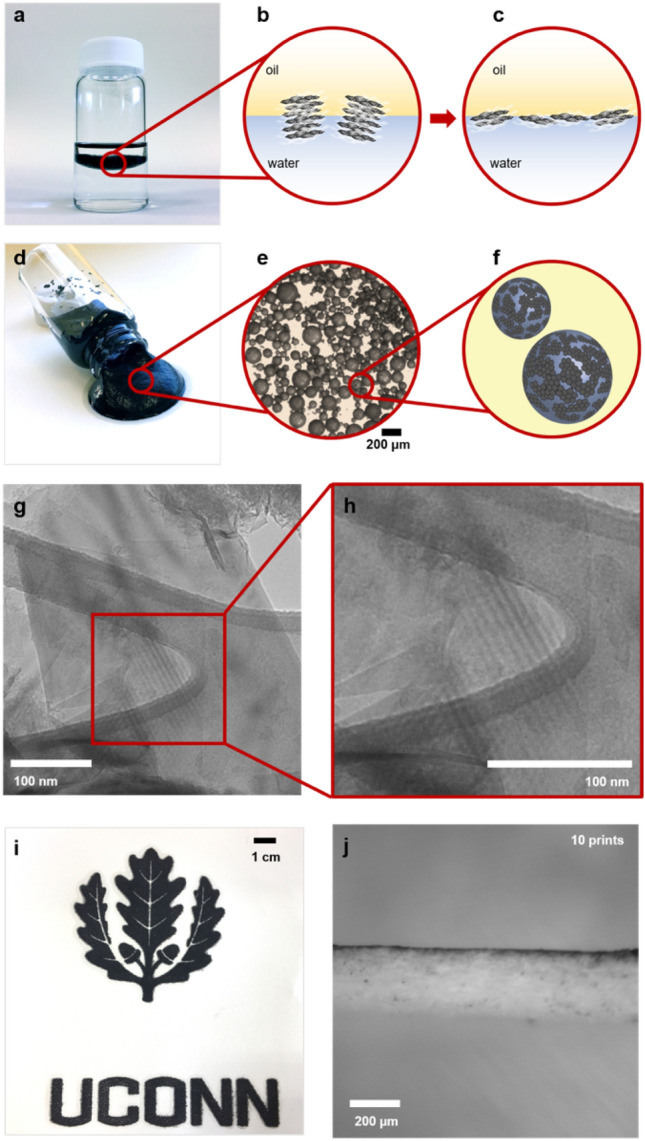Figure 1.

(a) Vial containing hexadecane (top), water (bottom), and graphite. Although denser than water, the graphitic material is pinned at the oil/water interface; (b) illustration of graphite initially at the oil/water interface; (c) overlapping graphene sheets at the solvent interface after the spontaneous spreading (exfoliation) of the graphite; (d) conductive ink consisting of graphene stabilized water-in-oil emulsion; (e) optical microscopy image of the ink showing graphene stabilized water droplets; (f) illustration of water-in-oil emulsion with graphene stabilizing the interface; (g) TEM image of graphene prepared by interfacial trapping showing overlapped exfoliated sheets; (h) magnified image showing the moiré pattern on graphene formed by re-stacked exfoliated graphene sheets; (i) UCONN (University of Connecticut) logo printed on paper using graphene emulsion ink; (j) A cross-section of graphene emulsion ink printed on paper.
